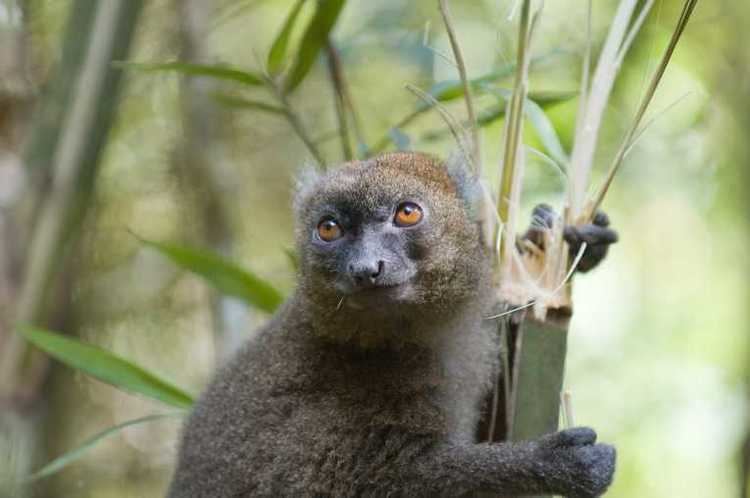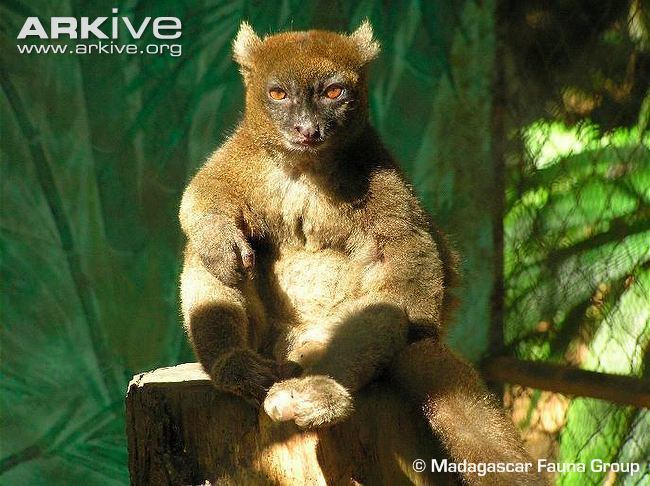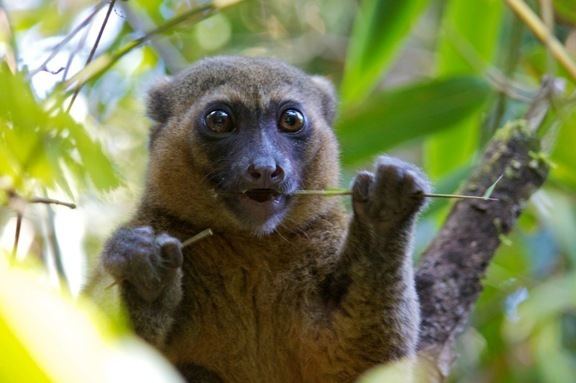Scientific name Prolemur simus Rank Species | Phylum Chordata Genus ProlemurGray, 1871 Higher classification Prolemur | |
 | ||
Similar Bamboo lemur, Lemur, Golden bamboo lemur, Primate, Lemuridae | ||
The greater bamboo lemur (Prolemur simus), also known as the broad-nosed bamboo lemur and the broad-nosed gentle lemur, is the largest bamboo lemur, at over five pounds or nearly 2.5 kilograms. It has greyish brown fur and white ear tufts, and has a head-body length of around one and a half feet, or forty to fifty centimeters. They have relatively long tails and long back legs for leaping vertically amongst the trees of their forest habitat . It feeds almost exclusively on the bamboo species of Cathariostachys madagascariensis, preferring the shoots but also eating the pith and leaves. It is unknown how their metabolism deals with the cyanide found in the shoots. The typical daily dose would be enough to kill humans. Greater bamboo lemurs occasionally consume fungi, flowers, and fruit. Its only confirmed predator is the fossa, but raptors are also suspected. Its current range is restricted to southeastern Madagascar, although fossils indicate its former range extended across bigger areas of the island, including as far north as Ankarana. Some notable parts of the current range are the Ranomafana and Andringitra National Parks.
Contents
- Madagascar greater bamboo lemur rarest animal in the world in ranomafana parc part 1 of 2
- Conservation status
- References

Greater bamboo lemurs live in groups of up to 28. Individuals are extremely gregarious. The species may be the only lemur in which the male is dominant, although this is not certain. Because of their social nature, greater bamboo lemurs have at least seven different calls. Males have been observed taking bamboo pith away from females that had put significant effort into opening the bamboo stems. In captivity, greater bamboo lemurs have lived over the age of 17.

Madagascar greater bamboo lemur rarest animal in the world in ranomafana parc part 1 of 2
Conservation status

The greater bamboo lemur (Prolemur simus), is one of the world's most critically endangered primates, according to the IUCN Red List. Scientists believed that it was extinct, but a remnant population was discovered in 1986. Since then, surveys of south- and central eastern Madagascar have found about 500 individuals in 11 subpopulations. The home range of the species is likewise drastically reduced. The current range is less than 4 percent of its historic distribution. Most of the former range is no longer suitable habitat due to this species' dietary specialization on bamboo and its microhabitat preferences. The outlook is dire since areas with critically low population numbers have no official protection, and comprise severely degraded habitat. The species is endangered by the following: slash and burn farming, mining, bamboo and other logging, and slingshot hunting.
It has been named one of "The World's 25 Most Endangered Primates."
